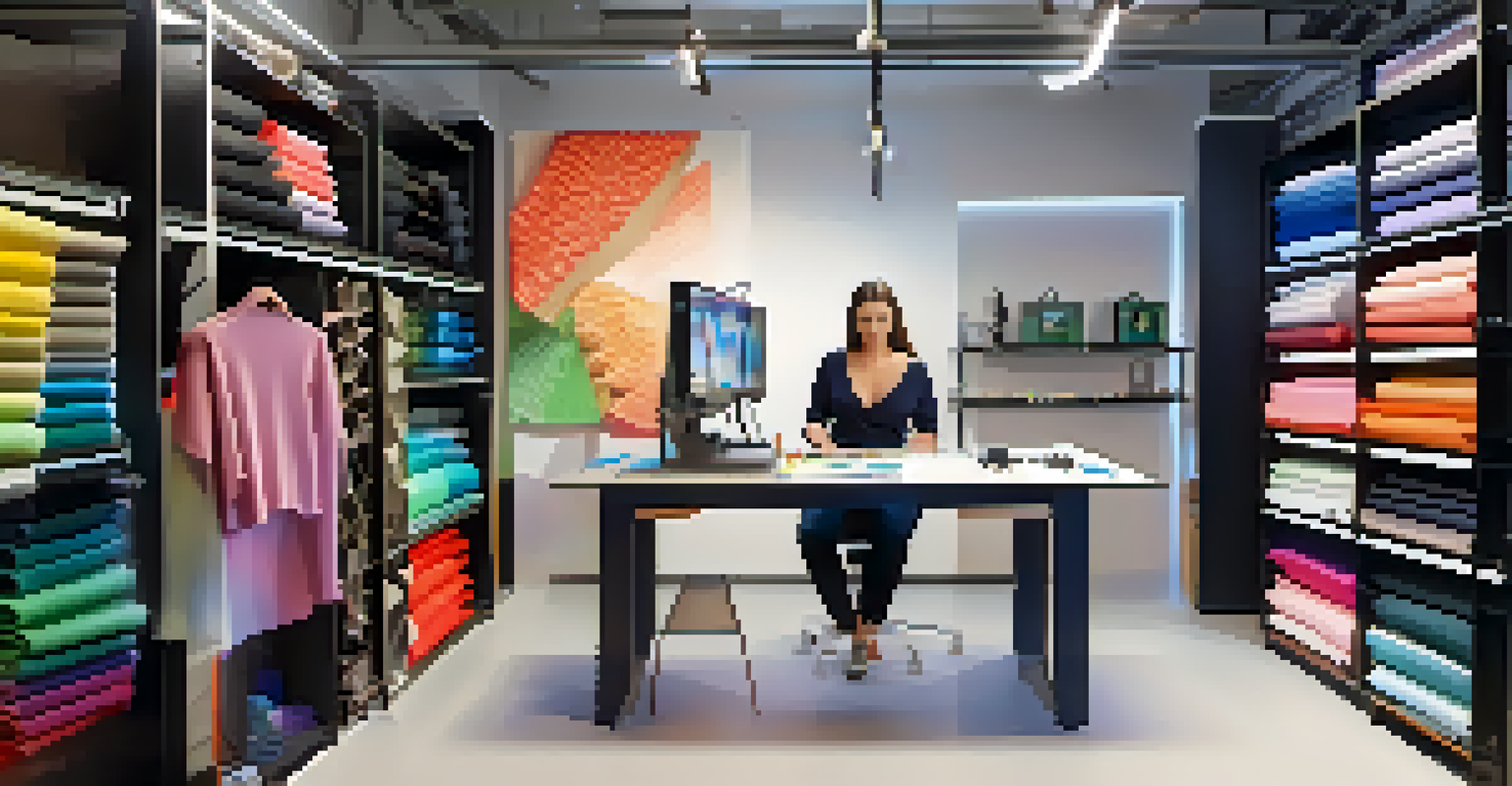Sustainable Fashion: Balancing Profit and Ethical Responsibilities

Understanding Sustainable Fashion and Its Importance
Sustainable fashion refers to clothing that is designed, manufactured, and consumed in a way that minimizes environmental impact and promotes ethical practices. This sector is gaining traction as consumers become more aware of the ecological and social issues surrounding traditional fashion. The importance of sustainable fashion lies not only in reducing waste but also in fostering a more responsible approach to garment production.
The greatest threat to our planet is the belief that someone else will save it.
Many brands are beginning to incorporate sustainable materials, such as organic cotton or recycled fabrics, into their collections. This shift not only helps the planet but also appeals to the growing demographic of eco-conscious consumers. By prioritizing sustainability, brands can build a loyal customer base that values ethical practices over fast fashion trends.
Furthermore, sustainable fashion can spark a broader conversation about consumer habits and the true cost of clothing. When individuals are educated about the environmental and social implications of their purchases, they often make more informed choices, which can shift market demand towards more sustainable options.
The Economic Benefits of Sustainable Fashion
While some may argue that sustainable fashion is more expensive, the economic benefits can be substantial in the long run. Brands that commit to ethical practices often experience reduced waste and lower operational costs through efficient resource management. This can lead to higher profit margins, negating the initial investment in sustainable materials.

Additionally, as consumers prioritize sustainability, brands that align their values with those of their target audience can see increased sales. Companies like Patagonia and Everlane have successfully embraced this model, proving that sustainability can coexist with profitability. Their transparent business practices attract customers who feel good about their purchases, driving loyalty and repeat business.
Sustainable Fashion Minimizes Impact
Sustainable fashion emphasizes ethical production and eco-friendly materials, reducing waste and encouraging responsible consumer choices.
The circular economy is another economic advantage of sustainable fashion. By promoting practices like recycling and upcycling, brands can create new revenue streams and reduce raw material costs. This not only benefits the bottom line but also creates a positive impact on the environment.
Challenges in Implementing Sustainable Practices
Despite the benefits, many brands face challenges when transitioning to sustainable practices. One of the primary hurdles is the cost associated with sourcing sustainable materials and implementing ethical labor practices. Smaller brands, in particular, may struggle to compete with larger companies that can afford to make these investments.
Fashion is the armor to survive the reality of everyday life.
Supply chain transparency is another significant challenge. Many fashion companies rely on complex global supply chains, making it difficult to ensure that every facet of production adheres to ethical standards. This lack of transparency can lead to consumer distrust, suggesting that brands must invest in solutions to monitor their supply chains effectively.
Additionally, changing consumer behavior can be a slow process. While awareness of sustainable fashion is growing, some consumers are still hesitant to pay a premium for eco-friendly products. Brands must work to educate their customers and prove that sustainability is worth the investment.
The Role of Certifications in Ethical Fashion
Certifications play a crucial role in guiding consumers toward ethical fashion choices. Various organizations offer certifications that verify sustainable practices, such as GOTS (Global Organic Textile Standard) or Fair Trade. These certifications provide consumers with peace of mind, knowing their purchases support responsible manufacturing.
For brands, obtaining certifications can enhance their credibility and appeal in a crowded market. This badge of honor signifies a commitment to ethical practices, which can differentiate a brand from its competitors. Shoppers are increasingly looking for assurance that their clothing is not just fashionable but also ethically produced.
Consumer Demand Fuels Change
As consumers increasingly prioritize sustainability, brands are adapting their practices to meet this growing demand and enhance customer loyalty.
However, navigating the certification landscape can be confusing for both consumers and brands. With multiple certifications available, it’s essential for brands to choose those that align best with their values and resonate with their target audience. Clear communication about what these certifications mean can further build trust with consumers.
Consumer Demand Driving Change in Fashion Industry
Consumer demand is a powerful force driving the shift towards sustainable fashion. As more people become aware of environmental issues, they are actively seeking out brands that prioritize sustainability. This shift is prompting companies to rethink their production methods and embrace eco-friendly practices.
Social media also plays a significant role in shaping consumer preferences. Platforms like Instagram allow consumers to share their values and influence others, creating a ripple effect in the fashion industry. Brands that engage with their audience and showcase their sustainable initiatives can harness this power to increase their visibility and appeal.
Moreover, the rise of the 'conscious consumer' is pushing brands to be more transparent about their practices. As customers demand accountability, companies are finding that being open about their supply chains and sustainability efforts can lead to increased customer loyalty and enhanced brand reputation.
Innovative Technologies Supporting Sustainable Fashion
Technology is playing an increasingly vital role in promoting sustainable practices within the fashion industry. Innovations such as 3D printing and digital fashion design are reducing waste and streamlining production processes. These technologies enable brands to create prototypes without the need for physical materials, significantly lowering their environmental footprint.
Additionally, advancements in fabric technology are making sustainable materials more accessible and affordable. For example, companies are developing textiles made from recycled plastics or agricultural waste, providing environmentally friendly alternatives to conventional fabrics. This innovation not only supports sustainability but also appeals to consumers looking for unique and responsibly sourced products.
Technology Enhances Sustainability
Innovative technologies like 3D printing and advanced fabric development are streamlining production processes and making sustainable materials more accessible.
Moreover, data analytics helps brands optimize their supply chains and inventory management. By understanding consumer behavior and preferences, companies can reduce overproduction and minimize waste, further contributing to a sustainable future.
The Future of Fashion: A Sustainable Vision
As the fashion industry continues to evolve, the future looks promising for sustainable practices. With growing consumer awareness and demand for ethical choices, brands are increasingly prioritizing sustainability in their business models. This shift not only benefits the planet but also fosters a more responsible industry overall.
Collaboration among brands, consumers, and organizations is essential for driving meaningful change. By working together, stakeholders can share best practices, innovate, and create a collective impact that transforms the industry. Initiatives like Fashion Revolution and the Ellen MacArthur Foundation are just a few examples of how collaboration can lead to significant advancements in sustainability.

Ultimately, the journey toward sustainable fashion is ongoing. While challenges remain, the commitment to ethical practices and environmental responsibility is gaining momentum. With continued effort and innovation, the fashion industry can pave the way for a brighter, more sustainable future.